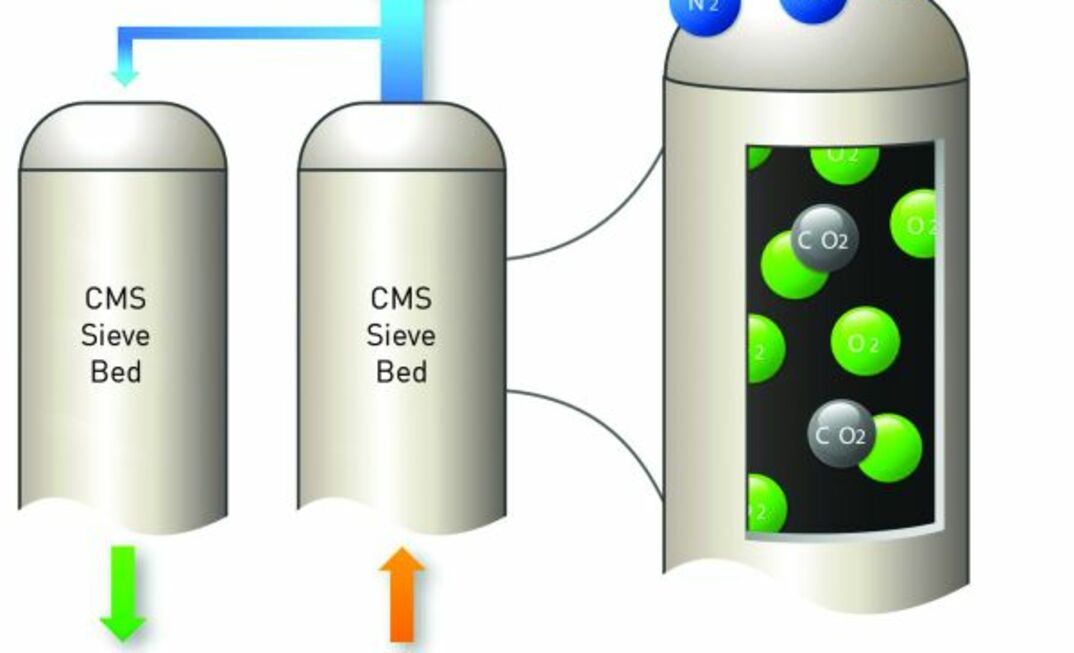Published in the August 2009 Coal USA Magazine
The mobile N-300 CMI product inerts the environment behind seals to prevent methane ignitions, explosions, and fires using a pressure swing adsorption technology to generate the nitrogen. The 300 in the product’s name refers to the number of cubic feet per minute the technology can spread to make potentially bad air inert.
“PSA uses a carbon molecular sieve material and pressure to adsorb oxygen molecules while allowing nitrogen molecules to pass through the sieve material,” vice-president of sales Robert Wolff said.
The generator, developed with help from a National Institute for Occupational Safety and Health grant following regulatory changes dictating new laws for inertion behind seals, was given the final approval along with OSG’s air dryer by Pennsylvania state officials on April 13.
After NIOSH developed a hypothesis that placing a nitrogen generator inside of the mine near the sealed area would dramatically improve the response time to render an area inert and thus improve safety, the two groups converged at a 62,000-cubic-feet area of the agency’s Safety Research Coal Mine to set seals and run evaluations. The N-300 CMI reduced oxygen levels behind the seals from ambient (20.9% oxygen) to 6% in a relatively short period of time, Wolff said, and the system maintained a compliant environment over time.
“The ability to maintain a compliant atmosphere in a much larger and more typical sealed area at an active mine has been demonstrated as well,” he added.
Earlier this year, an eastern US underground operation opted to place the OSG system in its mine and feedback thus far has been positive, Wolff said, reiterating that the technology was available for rapid deployment to anywhere in the country.
“[It] enables mine operators to begin injecting nitrogen into a sealed area faster and more economically than any other means currently available while eliminating potential obstacles such as terrain, access or cost,” he noted.
OSG designed the underground unit for easy placement in any problematic area when the levels of oxygen and methane create an atmosphere outside MSHA requirements. The unit, as well as larger nitrogen-generating membrane systems for use above ground, can be purchased or leased from the company.
“In order to facilitate transportation and movement from area to area underground so that the system can be employed near the sealed area, the N-300 CMI fits within the confines of the width and length of a standard-sized shield car as well as the height of typical mine entries operating in the Pittsburgh coalbed,” Wolff said of the unit, which features a nitrogen receiver tank, molecular sieves, a gas flow monitoring system, a nitrogen delivery line and a gas quality monitoring system.
The company says there are no adverse effects on any other underground equipment when the N-300 CMI is put into use, and it is a safe underground alternative to the conventional injection technology through pipelines and boreholes.
However, Wolff said, if a surface unit is a more viable option for any mine or situation, OSG produces an above-ground system that is available on the same purchase or lease terms. He pointed out that some pre-planning might be required for that version, as time was required to construct lines and roads and gain approval from nearby property owners, if necessary.
























